
|
SUMMARY:
This step-by-step guide aims to increase your free consultation attendance by helping you create a seamless, transparent, and value-driven customer experience. Because securing a free consultation sign-up is just the beginning. The real challenge? Getting customers to show up. Below are the step-by-step actions designed to overcome common obstacles and attract attendance. |
Action Box: AI workflow can do this with you
MeclabsAI can do it with you. Try the multi-agent workflow How to Get Customers to Show Up to a Free Consultation (MeclabsAI is MarketingSherpa’s parent company).
‘If I am your ideal customer, why should I buy from you, rather than your competitors?’ – the answer to that question is the value proposition of your company, according to MeclabsAI (MarketingSherpa’s parent company).
Now let’s get more granular. Each action you ask your ideal customer to take should have a value prop as well, a process-level value proposition – ‘If I am your ideal customer, why should I [take this action – e.g., show up to a free consultation] rather than any other action I can take?’
When you build your free consultation with a process-level value prop – in other words, when you ensure it has real value for your ideal customer – it becomes much easier to market. Just like any other product or service.
And make no mistake, a free consultation is a product. True, people may not be paying with money. But they are paying with their time and trust – which for some high-level prospects are even more valuable than their company’s budget.
So before you even start to market it, build a consultation that offers unmistakably attractive value. And then be clear on what that value is.
For example, instead of simply labeling it a ‘free consultation,’ rename it to something like a ‘30-Minute Personalized Growth Plan Session.’ This immediately communicates a tangible benefit and helps prospects understand what they are signing up for. Clear messaging reduces doubts and increases the perceived value of the session.
Whatever you do, don’t try to trick people. Maybe you can get some people to sign up in the moment, but very few people will actually show up. Here’s an example from very early in my career.
After my freshman year in college, I worked a telemarketing job where the goal was to get people to show up to an in-person sales consultation for timeshares.
Before
At first, I followed the company’s script. There was a qualification call getting some basic info. Then a follow-up call for qualified prospects that basically implied they won a vacation to Florida without saying those words specifically. But I found out this approach didn’t get many shows.
You see, I only got a bonus above my base wage if people actually showed up to the consultation. So I might be talking to them on a Tuesday night, and they’d book the consultation for a Saturday. Maybe they were really excited about winning, or maybe they were just trying to get me off the phone, but I could do a pretty good job booking them.
However, between Tuesday and Saturday they would think about it more. Or maybe they talked to a friend. And they had some anxiety because it didn’t feel quite right to get this call out of the blue about winning a trip. This worried that maybe it’s just a veiled sales pitch. So they wouldn’t show up. I wouldn’t be in the bonus, and that did the company no good.
One day, I tried a different approach. I just started treating these people how I wanted to be treated. I practiced transparent marketing before I even knew it existed. My goal was to be credible…not incredible.
So instead of hyping them by telling them I just went to the beautiful Florida beach that morning and they could leave the drudgery of their job for a few days because they were selected for a Florida vacation…
After
…I was just straight with them. I told them that the company I worked for sold timeshares. And if they went to a consultation for two hours about the timeshare, the company would give them a free hotel stay in Florida and some gift cards for food.
I said, some people love this, and it’s a way they take vacations on someone else’s dime. But for other people, they’re not interested in spending their time this way. Which are you?
So without knowing it, I was focusing on the ideal customer (see Step #2). If the person I had on the phone wasn’t a fit, I just moved on to the next call (please note, this was before the Do Not Call Registry).
In this case, the process-level value focused on the incentive. It wasn’t a true value proposition. But I couldn’t change the sales consultation itself…or any element of the offer. I was just a college kid hired over the summer. So I controlled what I could – the messaging.
Of course, this is a place many readers may find themselves in as well – having to increase perceived process-level value…without actually being able to change the fundamentals of the offer or product (in this case, the consultation).
If you’re higher up in the organization and can make those fundamentals changes – do so. Build the consultation with process-level value from the ground up.
Results
My shows increased dramatically. I was in the bonus (a minimum of four shows a week, and often more) every week for the rest of the summer.
An unexpected thing happened as well – I enjoyed my job more. I had real friendly conversations with these people and even built minor relationships with them (some people were interested but couldn’t do it right away, so I would offer to call them back). I even learned about being a minor actor on a broadcast TV show and what it’s like to be the wife of a record producer.
I’m not advocating cold calling (and please remember, the Do Not Call Registry does exist now). I’m saying take whatever situation you’re in and practice customer-first marketing. Realize that these are real human beings you want to reach and determine how you can create and communicate real value for them.
It reminds me of when I interviewed Tom Ghiden on How I Made It In Marketing. He emphasized the importance of presenting value in a way that reflects real customer experiences, and he gave an example from his career of modernizing Gillette’s messaging to show authentic shaving moments.
“You talked about the belief that advertising is just sort of trying to trick consumers. And that's something that we've always had to deal with as marketeers. But I think the reality is that consumers – when they see something that reflects their life in a true, honest way – they are more believing in the brand message and the things that the brand is trying to say,” said Tom Ghiden, managing director, JOAN London.
Let’s face it – you can’t help everyone with your free consultation. Not if the consultation is any good. Because a valuable consultation will be tightly aligned around specific problems or goals.
Since not every lead is an ideal match, refine your sign-up process to include a few straightforward qualifying questions. Doing this ensures that only those who truly stand to benefit are commit to the meeting. This step also subtly motivates prospects to invest in the session by self-selecting into the process.
Another way to make sure you get the right prospects who are committed and motivated enough to show up for the consultation is to ask them to put a little skin in the game, like in this next example.
Jeffrey Paul’s Hair & Scalp Specialists in Cleveland has been helping clients with hair and scalp solutions for 49 years. They offer a 90-minute consultation called ScalpCheck® that analyzes the scalp and hair to uncover issues like dandruff, scalp itch, or excessive shedding.
Before
Before 2020, the team offered ScalpCheck for free. They figured that once people sat in the chair and were educated on what was really happening with their hair and scalp, the ‘sale’ would feel natural.
But ‘free’ did not have a high perceived value. People booked consultations and then no-showed because, in their mind, it cost nothing to skip. That wasted valuable appointment slots for the company – especially since patients must prep by not washing their hair for 48 hours before the visit.
Launching with a no-commitment free consultation had its purpose – it gave the team time to refine the process and lower expectations while they perfected delivery so early hiccups didn’t create frustration or negative reviews. Once the service was polished, though, they realized they needed to shift from quantity of leads to quality.
After
The team felt that the consultation had significant value, but the perception of that value was low since the consultation didn’t require any commitment from the prospect.
“Our ScalpCheck consultations are more than a sales conversation – they’re a genuine service, closer to a doctor’s exam with built-in analysis that points clients to the right solution. That alone has significant value,” said Emmanuel Mroczka, director, Jeffrey Paul’s Hair & Scalp Specialists.
They introduced a $75 refundable deposit for ScalpCheck but people could get a full refund with 48 hours’ notice. So it was still a free consultation…for the people who actually showed up. They felt that $75 was enough to discourage casual no-shows but still accessible to the average client.
“We didn’t want any client confusion. My personal and business philosophy is simple: treat clients the way I’d want to be treated. So we built a strategy around almost over-communicating the deposit policy,” he said.
For phone calls, the team was trained with scripts that explained not just what the deposit was, but why it was collected: appointment slots are limited, the service requires client prep in advance, and last-minute cancellations prevent another person from taking that time slot.
For online bookings, they made sure there was clear communication on the online booking page.
Creative Sample: Booking screenshot

They also clearly communicated the cancellation policy in instructions the prospect received after booking the consultation.
Creative Sample: Pre-appointment instructions (arrows added to screenshot to show cancellation section)

Results
No-shows dropped to less than two percent, and the deposit helped qualify highly motivated clients versus people just gathering information.
Prospects walked in seeing the consultation as something worth their time and investment. “We noticed clients came better prepared – some with questions written down, others with photos of their hair history. They arrived on time, were more engaged during the consultation, and treated it more like a professional medical appointment rather than a free trial,” he said.
When it came time to discuss solutions, the deposit also made the purchase feel easier – the prospect had already mentally spent the $75, which could not be applied toward their purchase.
“’Free’ works best when framed with value and buy-in. By asking for a refundable deposit, we turned free consultations into commitments – and created a win-win of fewer cancellations, better-qualified leads, and more clients finding solutions,” Mroczka advised.
I’ve seen some processes to sign up for a free consultation go like this:
The ‘sale’ isn’t over once they’ve clicked to book. A generic booking process kills momentum.
Instead, use a value-infused scheduling process that communicates the value of the fields and clicks your brand requires. By continuing to communicate value to prospects when they book a time, you get less people dropping out of the process. You also pre-sell the experience they will get if they actually show up to the consultation. A value-infused sign-up path encourages commitment.
I’ve heard Flint McGlauglin, CEO, MeclabsAI, explains this many times with a great analogy of surf fishing here in Florida. This is a version I lifted of that analogy I lifted out of Shopping Carts Optimized: How a few tweaks led to 12% more revenue across an entire e-commerce website (an old MarketingExperiments web clinic):
“Once you have set the hook, you work isn’t over. It’s not like you can set the hook and then take the rod, set it on the sand, sit back in your lounge chair and drink a beer while you wait for the fish to swim to shore. But that’s precisely how many of us are marketing. We make sure we are on the right channel, we make sure we have the right bait, we make sure we set the hook. But once the hook is set, we put the rod down.
And if you put the rod down here is what happens – the line loses slack. The reason that a fishing rod is flexible is so that the line would be held taut and the fish will fight the tip of that rod. If the line goes slack the fish can spit the hook out
Now how does that connect to all that we say today? There is a tension in the line that must be kept all the way through the cart process and that tension is closely associated with this marine concept – it is cognitive momentum.”
“It's hard to take a full story and build it into a sentence, into like five, six, eight words. It's really, really hard, right? But you got to stay ahead of that. You got to understand that building a story starts at being clear…If they don't get that in the first five seconds – the first few words they – see they're gone. That's it. And I think it's B2B, B2C, whatever you're doing, it's very relevant to build a really good story,” Asaf Raz, VP of Marketing, Agora, told me in B2B SaaS Marketing: No progress after Series A without product marketing (podcast episode #148).
Raz was talking about the first communication your prospect sees about your brand in a channel. But the same lesson applies in the free consultation signup funnel.
As discussed in Step #3, you have to keep the cognitive momentum going. And to do so, it shouldn’t feel like the prospect is forced to keep giving your company something – information, their time, etc. They want to get something. The value should feel like it’s flowing towards them.
To instill that feeling, you essentially tell them a story. Of what will happen in the consultation, and how it will benefit them.
For example, when Aetna HealthSpire changed their landing page from selling the company’s overall Medicare Advantage product to setting clear expectations for what the prospect would get from calling a TeleAgent, they significantly boosted leads. (Read the full case study in Landing Page Optimization: How Aetna’s HealthSpire startup generated 638% more leads for its call center).
Clarity goes a long way toward building trust. And people only show up for free consultations when they trust they will get value.
So be clear about the value on the landing page, in the signup ‘cart’ process, in the confirmation email (see Step #6). Outline the free consultation session’s agenda, duration, and areas of focus. Include a brief success story or testimonial to provide social proof.
When prospects know exactly what to expect, anxiety drops, confidence rises, and they are more likely to invest their scarce and valuable time in your free consultation.
Sometimes a little extra push helps seal the deal. Offer a relevant incentive – like a complimentary resource or a discount on future services that taps into the prospect’s motivation.
Make it a unique benefit that helps them reach their goal or overcome their pain point. Remember, that is the why the consultation exists to begin with – to use your company’s experience, data, and expertise to help the prospect achieve something.
You could tie the reward to presence rather than sign up to add an extra layer of commitment. Or you could choose to give them the incentive ahead of time, so they begin to perceive the value of the consultation itself. Like in our next example.
Adagio Teas sells directly to consumers, but also has a wholesale division, AdagioXL.
Before
The team invites existing clients and new leads to schedule consultations. When they had a significant number of no-shows and non-responses, they knew they had to make the meeting more enticing by offering something of significant value.
After
To make its free consultations more valuable to retailers, the team created custom tea market reports with data-backed insights derived from its direct-to-consumer division.
Creative Sample: Example tea market report for tea company X

When retailers register on the wholesale division’s website, they provide their ZIP code. The team then uses that information to create a report based on that location.
“Selecting a tea assortment is an important factor in tea businesses’ success – ensuring that they know the tea buying audience in their area can set them up for immediately connecting with local consumers and enhancing sales,” explained Cynthia Fazekas, wholesales sales manager and tea specialist, Adagio Teas Wholesale.
For example, a start-up business owner was initially planning to only offer wellness-themed herbal teas but was intrigued by the offer of the report. Once she read the report, she realized that there might be some benefit to offering a more expanded menu.
“In our conversation, we discussed how all teas have some inherent health benefits but also that overlooking core tea drinkers of classic items like Irish Breakfast and Earl Grey might inhibit faster growth and achieving that all important ‘in the black’ milestone for the new business,” Fazekas said.
The new owner added those classic teas and had a robust launch with a well-rounded tea menu that appealed to what locals were seeking while exposing them to the more health-focused blends for when they have a need.
Results
By offering a custom report, the consultation shifted from being viewed as a generic sales pitch to an educational opportunity that delivered actionable insights. Once a person views a report, questions naturally follow.
“We have seen increased attendance and better conversion rates,” she said. “The other nice thing about this approach is that it helps create a strong connection – human to human – which fosters solid B2B relationships over the long haul.”
Your ideal prospect signs up for a free consultation. And then there is a gap in time between when they said ‘yes’ to attend and when they can followup on that ‘yes’ by actually attending.
And in that gap, life and work happens – their daughter goes to the ER, they onboard a new client, their son has a soccer tournament, they are called away for a last-minute business trip, and on and on.
For this reason, one reminder is rarely enough. Establish a schedule with an immediate confirmation, a 24-hour reminder, and a final nudge an hour before the session. Don’t rely on only one channel, send a text message as well (as long as they opt-in when registering, preferably in an optional field on the form).
Personalize these messages by using the prospect’s first name and reiterating the session’s primary benefit. This multi-touch approach keeps your appointment in mind.
However…
Don’t overdo it. If you’re opting them in to your overall email list when they sign up for the consultation, you may want to hold off on doing that until after the consultation.
Here’s why. Many brands have automated welcome series, plus a new subscriber may get regular email sends as well. Add that into the email reminders, text reminders, and perhaps even reminders from third-party platforms your brand uses, and you may overwhelm them (and turn them off) before they ever get to the consultation.
Here are some examples to help with your free consultation reminders.
VEXA Beauty is a fragrance brand.
“Everything is automated and impersonal now so don't underestimate the power of a personal follow-up,” advised Sabah Karimi, founder, VEXA Beauty.
Once a consultation is booked, an automated email confirms the appointment and provides prep instructions. Then Karimi follows up personally with a text or email within 24 hours. Texts tend to get the quickest response, but emails allow for slightly longer, thoughtful messages.
“This small gesture makes people feel seen rather than processed, and it reinforces the idea that their time matters,” Karimi said. “In my follow-ups I'd acknowledge the client as an individual (rather than just a slot on my calendar).”
Here’s an example of a typical message.
Hi [Name],
I’m looking forward to our consultation on [Date]. I’ve reviewed your initial details and have a few ideas ready to discuss...’
After starting this practice, she has seen attendance rates increase noticeably.
Karimi discovered that initiating the personal follow-up within a day of booking yields the best attendance rates. Waiting too long makes the consultation feel impersonal, and following up multiple times too aggressively can be off-putting.
DesignRush is an agency marketplace.
Before
One email confirming the booking.
After
The team tested small campaigns, and found that three touchpoints at specific intervals performed best:
Below that was an embedded thumbnail of a video with a play button. The very short video featured the person hosting the consultation introducing themselves and giving the session agenda. “This made the call feel more personal and transparent. Many prospects would comment and say that seeing someone from our company prior to the call helped prepare and comfort them,” said Gianluca Ferruggia, general manager, DesignRush.
Below the video, there were three bullet points of key takeaways the prospect could expect.
Since many prospects opened the emails on their phones, the team focused on short copy, clear CTAs, and bold visuals.
Results
An increase in show-up rate from 50% to 85%.
Prospects often hesitate over fears of wasted time or a hard sell. Tackle these concerns by including a Q&A section in your communication that addresses common objections. Offering reassurance – like emphasizing no-pressure benefits and honest insights – removes the barriers that keep customers from attending.
So does being clear on the problem you will help solve. As Flint McGlaughlin has said, “The goal of marketing is not to make a claim; the goal of marketing is to foster a conclusion.”
To get you thinking about how you can do that, check out the financial threat assessment created by the Law Offices of David L. Carrier, P.C. You can see it in Step #4 of How to turn your professional expertise into a lead gen engine with AI.
Flexibility is key in today’s busy world. Provide a simple online option to modify the appointment time if necessary. For those who miss the session, a friendly follow-up email with a new booking link can recover lost opportunities. This considerate approach shows that you value their time and are committed to providing value.
There’s a bigger lesson here for your entire free consultation funnel. As the word ‘funnel’ indicates, you are forcing people down a path. Hopefully you’ve figured out a path the works for most of your ideal prospects, but that doesn’t mean it works for all of your ideal prospects.
In those follow-ups to prospects who reschedule, cancel, or no-show, try to gain some customer wisdom. And then flex your funnel based on it, either the entire flow or just for a few outlying prospects.
“Oftentimes I find myself in squiggly lines, which is where I like to live. I think that we are so focused on forward movement that sometimes we miss all of the things that are happening around us that could provide a pivot,” Sandy Rubinstein, CEO, DX, told me in Marketing Campaigns: Lose the brand ego and lean into humility (podcast episode #130).
That curiosity and personal follow-up is only one way to better understand how you can serve your ideal prospects with your free consultation funnel.
For continuous improvement, you can also monitor attendance rates and identify potential drop-off points. And use A/B testing for your reminders, incentives, and confirmation messaging.
Data-driven tweaks ensure that your process continually improves, leading to higher attendance over time.
Sometimes discovering what changes to make requires a combined effort of data review and personal follow-up, like in this example.
While this article has so far focused on free consultations that require a previous signup and then meeting at an appointed time, I wanted to include one example of much simpler and quicker free consultations before I closed out this article.
Before
Paint Valley Equipment (PVE) is a national supplier of aftermarket agricultural parts. Diving into the data, the team saw that PVE’s sales had stalled at its top 200 retailers. The team developed a hypothesis on the cause – store-level staff, faced with multiple competing brands, weren’t confident recommending PVE’s SKUs.
After
Sales reps conducted discovery calls designed not to pitch, but to ask retailers questions like:
The answers shaped a 90-day sales enablement campaign to help the retailers’ staff recall and recommend the brand’s products quickly.
“Marketing launched targeted campaigns to the supplier’s existing customers ‘as if they were new,’ using LinkedIn, Facebook, and digital business targeting to keep the brand in front of both decision-makers and counter staff,” said Jeremy Harrison, founder, OneTable Strategy (PVE’s agency).
Creative Sample: Digital business targeting ad

Sales reinforced the education campaign with email follow-ups designed to be easily forwarded within customer organizations. Here’s an example email:
Hi [contact],
As a dealer for [company], if your OEM part is out of stock…
Or your customer doesn’t want to pay the OEM part price…
… you can offer them a US-made, PVE part to keep them from walking out the door.
Would it make sense for us to connect and talk more about this?
Best,
P.S. Here’s a page that talks about PVE parts if you’re not familiar. (link)
This sales enablement helped staff to recall and recommend PVE’s products quickly.
Results
The team targeted 176 businesses. The ads got 527,446 impressions to keep PVE top of mind. They also got clickthrough from 707 employes which took them to a catalog with product information.
After the digital business targeting campaign, they noted the following year-over-year improvements:
The team also scheduled nine tours with leadership from top retailers, a metric that was not tracked previously.
Momentum Marketing: How to get the ball rolling toward a purchase decision
Funnel Strategy: 54 elements to help you guide your buyers’ journey through the marketing funnel
Get Better Business Results With a Skillfully Applied Customer-first Marketing Strategy

The customer-first approach of MarketingSherpa’s agency services can help you build the most effective strategy to serve customers and improve results, and then implement it across every customer touchpoint.
Get More Info >MECLABS AI
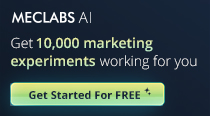
Get headlines, value prop, competitive analysis, and more.
Use the AI for FREE (for now) >Marketer Vs Machine
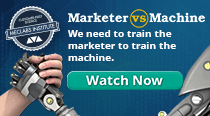
Marketer Vs Machine: We need to train the marketer to train the machine.
Watch Now >Live, Interactive Event

Join Flint McGlaughlin for Design Your Offer on May 22nd at 1 pm ET. You’ll learn proven strategies that drive real business results.
Get Your Scholarship >Free Marketing Course
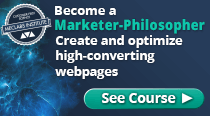
Become a Marketer-Philosopher: Create and optimize high-converting webpages (with this free online marketing course)
See Course >Project and Ideas Pitch Template
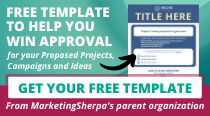
A free template to help you win approval for your proposed projects and campaigns
Get the Template >Six Quick CTA checklists
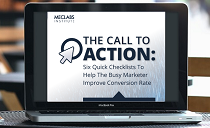
These CTA checklists are specifically designed for your team — something practical to hold up against your CTAs to help the time-pressed marketer quickly consider the customer psychology of your “asks” and how you can improve them.
Get the Checklists >Infographic: How to Create a Model of Your Customer’s Mind
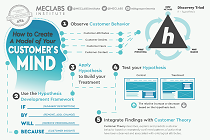
You need a repeatable methodology focused on building your organization’s customer wisdom throughout your campaigns and websites. This infographic can get you started.
Get the Infographic >Infographic: 21 Psychological Elements that Power Effective Web Design
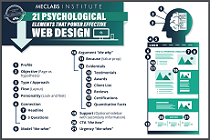
To build an effective page from scratch, you need to begin with the psychology of your customer. This infographic can get you started.
Get the Infographic >Receive the latest case studies and data on email, lead gen, and social media along with MarketingSherpa updates and promotions.